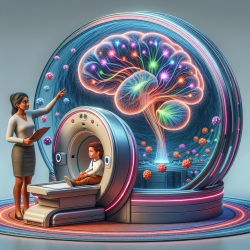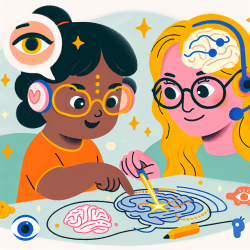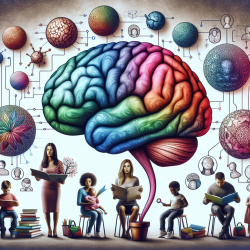Unlocking the Mysteries of Autism Through Functional MRI: A Guide for Practitioners
Autism Spectrum Disorders (ASDs) are complex neurodevelopmental conditions characterized by social, communicative, and behavioral challenges. As practitioners, understanding the underlying brain mechanisms is crucial for effective intervention. Recent advances in functional magnetic resonance imaging (fMRI) have provided new insights into the neural substrates of ASDs, offering potential pathways for targeted therapies.
Key Findings from fMRI Studies
The research article "Functional magnetic resonance imaging of autism spectrum disorders" provides a comprehensive overview of fMRI findings in ASDs. Here are some key takeaways:
- Hypoactivation in the Social Brain: Studies consistently show reduced activation in areas such as the prefrontal cortex and amygdala during social processing tasks. This hypoactivation is linked to difficulties in social cognition and interaction.
- Aberrant Frontostriatal Activation: During tasks requiring cognitive control, individuals with ASDs exhibit abnormal activation patterns in brain regions like the basal ganglia. This is associated with the repetitive behaviors often observed in ASDs.
- Language Processing Differences: fMRI studies reveal differential lateralization and activation of language-related regions, highlighting the unique challenges in communication faced by individuals with ASDs.
- Reward Processing Anomalies: There are atypical responses in the mesolimbic system to both social and nonsocial rewards, suggesting a fundamental difference in how individuals with ASDs perceive and respond to rewards.
- Connectivity Patterns: Task-based fMRI shows long-range hypoconnectivity and short-range hyperconnectivity, while resting-state fMRI indicates decreased anterior-posterior connectivity. These findings suggest a disruption in the integration of information across brain networks.
Implications for Practice
Understanding these neural mechanisms can significantly enhance the effectiveness of interventions. Here are a few ways practitioners can apply these insights:
- Targeted Interventions: By focusing on enhancing activation in the social brain regions, interventions can be more effective in improving social cognition and interaction skills.
- Customizing Cognitive Therapies: Recognizing the aberrant frontostriatal activation can help tailor cognitive control therapies to reduce repetitive behaviors.
- Language Development Programs: Programs that address the unique language processing patterns can be developed to improve communication skills.
- Motivational Strategies: Understanding reward processing anomalies can guide the development of motivational strategies that align with how individuals with ASDs perceive rewards.
Encouraging Further Research
While current findings are promising, continued research is essential. Practitioners are encouraged to stay informed about the latest developments in fMRI studies and consider participating in research initiatives. Collaboration between clinicians and researchers can lead to breakthroughs in understanding and treating ASDs.
To read the original research paper, please follow this link: Functional magnetic resonance imaging of autism spectrum disorders.










